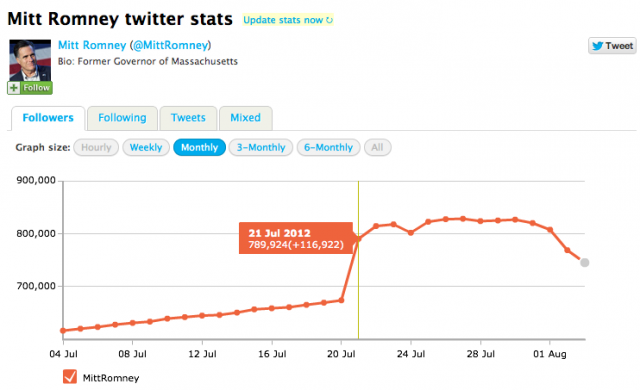More than 15 percent of Mitt Romney’s Twitter followers may be generated by paid services that use fake accounts to artificially inflate the number of people subscribed to the presumptive Republican nominee for US president, according to a new report.
The report comes from researchers at security firm Barracuda Labs, and it cites the addition last month of 116,922 followers to @MittRomney in a span of just 24 hours. The infusion on July 21 represented a 17-percent spike in accounts following Romney. A quarter of those new accounts were less than four days old, and 23 percent of them had never issued a single tweet. Ten percent have since been suspended by Twitter for unspecified reasons.
“Based on the above distinguishable features, we believe most of these recent followers of Romney are not from a general Twitter population but most likely from a paid Twitter follower service,” Barracuda Labs Research Scientist Jason Ding wrote in the report. Such services allow customers to buy followers for any Twitter account, he stressed, so it’s not clear if the fakes were purchased by Romney, his supporters, or his political foes.
from Ars Technica





